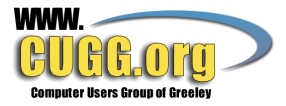 |
How to Tune Up Your PC for Better PerformanceJamie Leben, CUGG |
Before
performing any of these steps, create a backup, as data loss or
computer
malfunction may occur. IT-Works
or Jamie
Leben is not responsible for any potential damage that may be caused by
following this guide. This process should be performed
approximately
monthly. This guide does not address performance issues
potentially
caused by virus or malware infection.
Backup
Make
a
backup, as data loss or computer malfunction may occur at any time.
Hard drive errors
Check
for hard drive errors:
Start • Right-click My Computer • Left-click Manage • Left-click Event Viewer • Double-click System
Under
the
Source column look for any "disk" errors, which indicate a likely
need for immediate replacement of your hard drive, and may be the
entire cause
of your slow PC. Proceed no further if you find "disk"
errors. If no disk errors appear, proceed to the following
task.
RAM check
Check
your total RAM and available RAM:
Press CTRL + ALT + DEL • Task Manager • Performance tab
Under
Physical Memory the "total" is
the total amount of RAM in your computer in kilobytes; divide by 1024
to get the
number of megabytes. "Available"
is the unused amount of RAM in your computer in kilobytes; divide by
1024 to
get megabytes. If
you have less than
half of your RAM available (or less than ~1000MB), it's time for a RAM
upgrade.
Hard Drive Space check
Open
My
Computer, right-click your C: drive, left-click Properties.
If
the free
space is less than 25%, either uninstall unused programs and delete
unneeded
files, archive old files to backup media, then delete from the hard
drive, or
get a bigger hard drive
Device Manager
Check
for driver problems:
Start • Right-click My Computer • Left-click Manage • Left-click Device Manager
Look
for
any items that have a yellow triangle over them, indicating a driver
problem, download
and install updated drivers from the manufacturer to resolve the driver
issue. Close Computer Management when you are finished.
Restart
Restart
your PC to work from a fresh boot
System Restore point
Set
a
system restore point:
Start
•
All Programs •
Accessories •
System Tools •
System Restore •
Create a restore point • Next •
Name it • Create •
Close
Fonts
A
Large
number of fonts installed can slow boot time.
To view your installed fonts:
Start • Control Panel • Fonts
Uninstall
excessive (more than 500 or so) fonts. For more advice on
manage fonts,
search for too many fonts with
Google.
Here's
a
good one:
http://desktoppub.about.com/od/fonttechnologies/f/toomanyfontswin.htm
Programs installed
Uninstall
programs you don't use:
Start • Control Panel • Add/remove programs
Select
unused programs and click uninstall.
Notification area programs
The
Notification Area is the set of
icons
immediately to the left of the clock on the right side of the task
bar. A
large number of icons (more than 15) indicates a large number of
startup
applications, all of which use RAM and CPU resources. If your
not sure
what an icon does, double click it to see what it is called, then
Google it to
see if it needs to be running. Many programs have a
preferences menu with
an option to not have it start when Windows loads, others start from
msconfig
or the Windows Startup folder. Err on the side of leaving
things running
if your not sure what a program does (you should find out though)
Startup items
To
cut
down on the number of programs running at Windows startup, reduce the
items in
the Startup folder:
Start
•
All Programs •
Startup
Search
for what each item in Startup does, generally most items in startup can
be
deleted. To remove an item, right-click on the icon, left-click Delete.
Msconfig
Use
msconfig to further reduce the number of startup programs:
Start • Run • type msconfig • Click OK • Left-click the Startup tab • expand the Command column
Search
for each item to determine what it does, and if you can uncheck it to
disable
it. Items that don't appear in a Google search may indicate
malware. When in doubt, leave an item enabled. Click OK when done. Reboot as
suggested. Uncheck the
"show this at startup" message after reboot
CCleaner
CCleaner
is a freeware (donate if you like their software) system optimization
and privacy
tool. It removes unused and temporary files from your system, as well
as
registry errors. Download
CCleaner from http://www.ccleaner.com and
install it (you may want to uncheck the "install yahoo toolbar"
option). Start
CCleaner from the desktop
icon, click the Cleaner tab, and click analyze. After analysis is done,
click run cleaner, click the
Registry tab,
click scan for issues. After the scan is done,
click fix selected issues, make a
backup of
the registry changes to your C: drive, then click fix
all selected issues.
Under
the "tools" tab, there are options for removing startup items, just
like the previous startup and msconfig steps.
Reboot again
Make
sure
your computer is still functional after the changes you've made so far
Disk cleanup
Disk
cleanup removes temporary files from your system that may be slowing it
down.
Start • All Programs • Accessories • System Tools • Disk Cleanup.
Wait
for
it to scan (may take several minutes).
Select everything to be removed (generally, check all
boxes), click OK, and
wait for the cleanup to finish (can take several minutes to an hour).
Disk Defrag
A
fragmented hard disk slows down the system.
Disk defragmenter reduces fragmentation, speeding the
system.
Start
•
All Programs •
Accessories •
System Tools •
Disk Defragmenter • Click the C:
drive • click Analyze.
Defragment if suggested (can take an hour or more).
Enjoy your faster computer!

